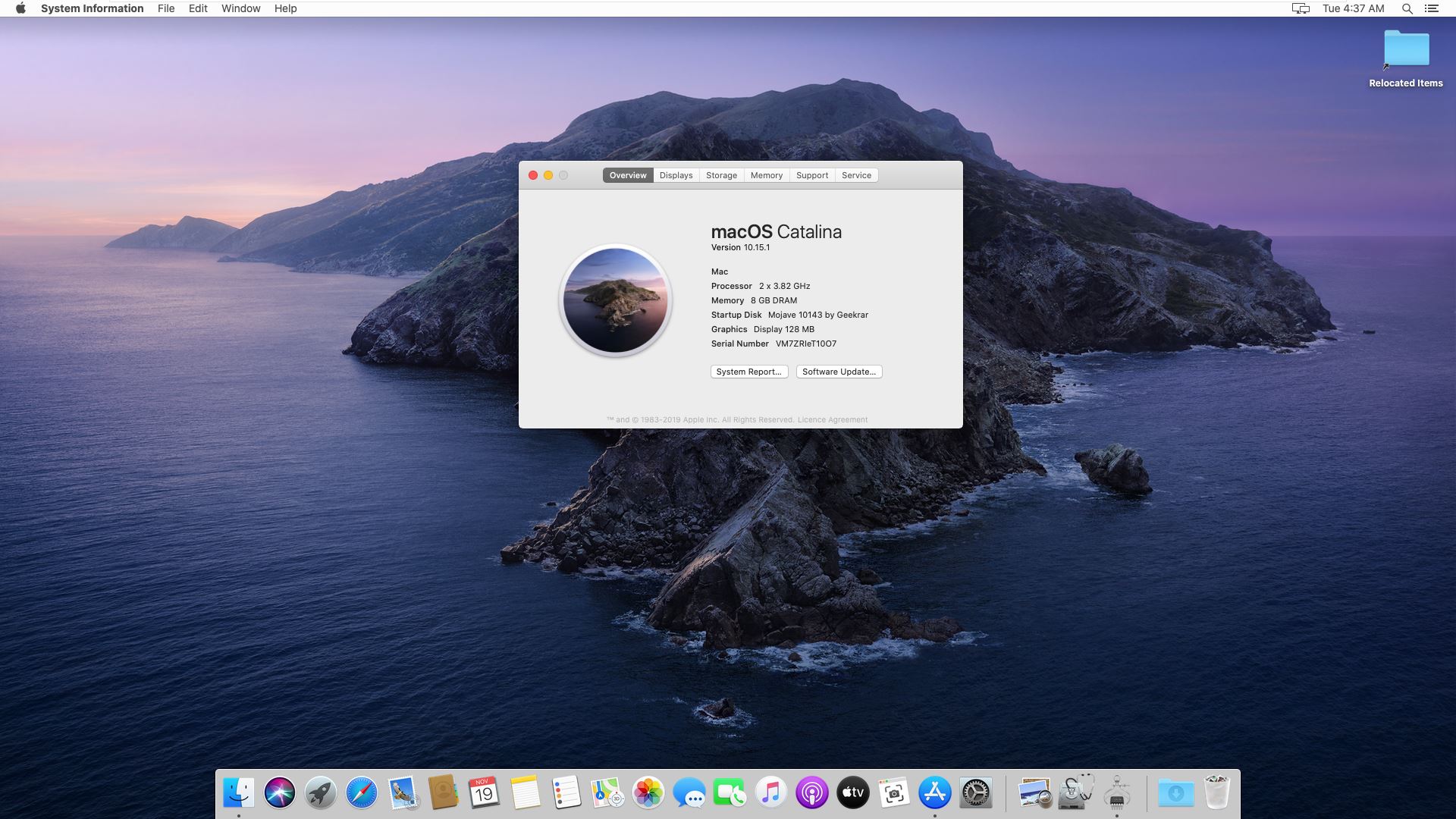Step One – Create or Download macOS Catalina ISO File. Whatever operating system you would like. Step 3: Before starting Multibeast, you have to go the 'Security' section of System Preferences in Mac OS X, go to the 'General' section, and check 'Anywhere' in the 'Allow applications' section. Once that's done, run Multibeast and install the following options.
Dec 24, 2020 Install macOS Catalina on VirtualBox on AMD Systems After the installation is completed, the virtual server will reboot, but this time it will boot to a genuine setup at which you will have to customize, make your accounts, and much more. With setting everything up, the macOS Catalina soon be successfully installed. Browse the macOS Catalina ISO For VMware & VirtualBox file and select it. That done, click on the Controller: SATA and click on the small disk plus icon, and select Choose Existing Disk. Parallels Desktop. Download and Install Windows 10 in one click; Over 20% faster virtual machine (VM) startup performance; Premium 24/7 phone and email support; Optimized for the latest Windows 10 updates, macOS Catalina and macOS Big Sur 11; DirectX 11 Support.
This document will provide instructions on getting a macOS Catalina install working with Guest Additions on VirtaulBox 6.1.
Start by downloading a copy of the installer from the App Store. You will need a computer running macOS and you will need to convert the installer to an ISO. I will not be covering these steps here, but there are plenty tutorials online.
Installing VirtualBox
I’m hoping you already have this part covered and you are coming here only because you had issues getting macOS installed, but just in case, make sure the following packages are installed (Arch):

Creating the VM
Start by creating a new VM. Give it a name without spaces.
Give it enough memory so the install will run faster. We can change this later.
Select to create a new Virtual Hard Disk
Select VDI
Select fixed size
Give it a bare minimum of 25GB (I would advise on at least 50GB if you can spare the space)
Edit the machine, go into «System => Motherboard» and disable floppy boot and change the chipset to PIIX3
In the processor give more CPU if you can spare
In «Display => Screen» increase the video memory to 128MB and enable 3D acceleration
Enable USB 3.0
Note: if you can’t see USB 3.0 you might need to add your user to the vboxusers group

Mac Os Catalina On Virtualbox Amd
Insert the install ISO
Additional Configuration
Now we need to run a few vboxmanage commands for additional settings. Either run the lines with vboxmanage from the script below (add your virtual machine name under $vm_name), or save the full script and run it.
Note: the default resolution is set to «1280x1024». You can change it in the last line of the update code. Make sure to keep it to “640x480, 800x600, 1280x1024, 1440x900, 1900x1200“
Installing macOS

We are now ready for the install. Start the machine and select you language.
Select disk utility.
Select the VirtualBox hard disk and click on erase.
Give it a name, select the same options and click on erase. Close the disk utility when done.
Click on install macOS.
Continue with the install as you would until you are presented with the desktop.
Note that the installer will reboot once in the middle of the install.
Installing Guest Additions
We now need to get Guest Additions installed. Remove the install ISO and mount the guest additions CD. Open it with finder and run the VBoxDarwinAdditions.pkg
Install it as if you would install any other package.
You will most likely get an error message that the install has failed.

Close everything, unmount the guest additions CD and open a terminal window (Command+Space, type terminal).
Now we need to restart the VM in recovery mode. Type in:
Once it has rebooted into recovery mode, on the top click on «Utilities => Termminal»
Type in the code below. This is to sign Oracle software as authorized. Then we disable recovery mode and restart the VM.
When the VM has rebooted you should have guest additions working. Remember that not everything works, but the features below should:
- Copy/Paste
- ~Drag and Drop~ Reported as not working (see comments)
- VirtualBox Shared Folders
- Guest Control
thank you for providing VirtualBox on MacOs.
I have installed VirtualBox 6.1.2 on the latest MacOs Catalina, on a 2018 Mac Mini. Inside Windows 10 x64 is running with the guest additions installed.
Unfortunately the sound is not working. Windows seems to play sounds but I can not hear them. Furthermore, all Mac applications are also silenced until I shut down the VM.
I have read that quite a few other people have this or a similar problem. You recommended to 'simplify' the sound setup. But I don't see anything special about my setup, I have external speakers plugged into the mac, enabled this in the system settings - that's it. The VirtualBox sound settings are unchanged from default.
Could you help me with this problem and guide me through debugging this problem if needed? I am quite new to MacOs.
Macos Catalina On Virtualbox Linux
Mac Os Catalina On Virtualbox
Thank you and Regards.